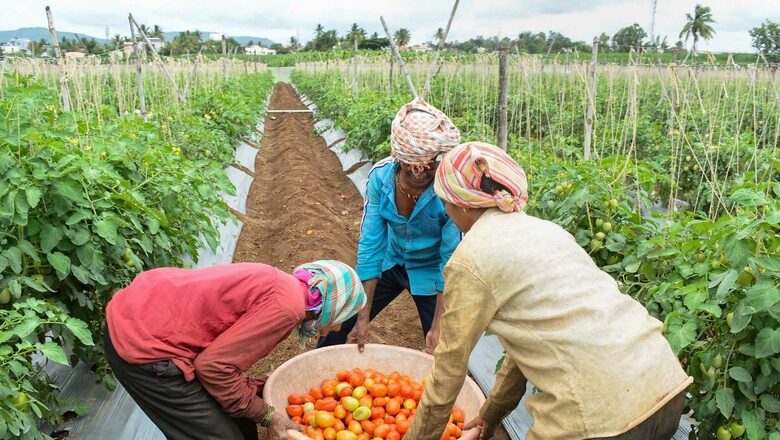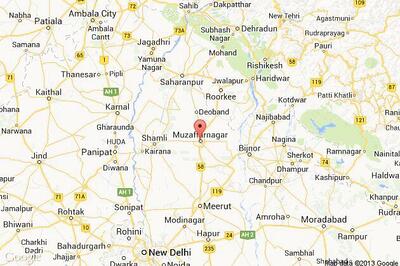
views
There is perhaps no sector as important as agriculture in India which contributes about 17 per cent to the total GDP and provides employment to a major chunk of the population.
India is now the world’s most populated country, with as many as 1.4 billion people. Feeding such a large population in today’s times is no joke. The need to make farming not just sustainable but also profitable is essential to ensure that India’s food security is maintained.
To that end, the capital infusion in the agricultural sector over the past nine years has been phenomenal. As pointed out by Union Home Minister Amit Shah on Tuesday, the agricultural budget has seen a five-fold increase under Prime Minister Narendra Modi’s leadership, going up from Rs 22,000 crore in 2013-14 to Rs 1,22,000 crore now.
In fact, the number of farmers availing farm loans has gone up from 7 lakh to 19 lakh in the same period. Also, compared to 2014, the production of cereals has increased from 323 million tonnes to 665 million tonnes; minimum support price for rice, wheat and millet has seen a rise of 68 per cent, 62.5 per cent and 68 per cent respectively; and outlay for subsidy on fertilisers has increased from Rs 73,000 crore to Rs 2,55,000 crore.
In June, PM Modi had revealed that the Centre is spending Rs 6.5 lakh crore every year for the agriculture sector and farmers’ welfare. Every year, the government provides an average of Rs 50,000 to every farmer in some form or the other. And now, the Modi government plans to double down on its outreach to farmers.
The Centre is actively considering a plan to boost cash support to small farmers by a third, which means the annual direct cash transfer to small farmers will go up to Rs 8,000 compared to the Rs 6,000 they currently receive every year. This will cost the government an extra Rs 200 billion. Officials are also discussing relaxing rules to include more farmers under the direct cash transfer program.
It would be safe to suggest that agriculture and farmers’ welfare has become a focus of the current government, which is why it has rolled out no less than nine welfare schemes intended for farmers. The most famous among them, of course, is the Pradhan Mantri Kisan Samman Nidhi Yojana, which facilitates direct cash transfer to small and marginal farmers. About 120 million farmers are availing the benefits of this scheme and getting Rs 6,000 every year from the government, adding to their income stability.
The other schemes include:
• Pradhan Mantri Fasal Bima Yojana (PMFBY): Launched in 2016, this scheme offers comprehensive crop insurance coverage to farmers at affordable premiums. It ensures timely compensation for crop losses caused by natural calamities, pests, or diseases. Within six years of its launch, the scheme has led to over 36 crore farmer applications being insured, with over Rs 1.7 lakh crore worth claims having been paid to affected farmers until February 2022. Around 85 per cent of the farmers enrolled with the scheme are small and marginal farmers.
• Soil Health Card Scheme: Launched in 2015, the Soil Health Card Scheme provides personalised soil health reports to farmers, offering valuable insights on soil nutrients and recommendations for balanced fertilisation. This has resulted in high yields and the maintenance of soil health, as farmers can now understand which crops will work best on the soil that their fields have.
• Pradhan Mantri Kaushal Vikas Yojana (PMKVY): Skill development is something the Centre has been pushing across all sectors and industries in India, and farmers are no exception. Launched in 2015, PMKVY aims to provide skill training to farmers and rural youth. It will benefit about 40 million farmers and rural youth by equipping them with essential agricultural skills, improving productivity, and generating employment opportunities.
• e-NAM (National Agriculture Market): Launched in 2016, e-NAM is an electronic trading portal that integrates agricultural markets throughout India. It enables farmers to sell their produce online, discover competitive prices, and connect with buyers across the nation. In many ways, this initiative has helped create one market for any farmers across the nation and sell their produce to the highest bidder.
• Paramparagat Krishi Vikas Yojana (PKVY): Launched in 2015, PKVY promotes organic farming practices and the adoption of traditional and indigenous methods. Organic farming is crucial to maintaining soil health and building a sustainable agricultural ecosystem.
• Pradhan Mantri Krishi Sinchai Yojana (PMKSY): Introduced in 2015, PMKSY aims to enhance water efficiency and promote sustainable irrigation practices. The driving force behind this initiative is the motto of “Har Khet Ko Paani”, which means the government is focused on ensuring that every farmer has access to water and is able to utilise it in a sustainable manner.
• PM Krishi Sampada Yojana: This scheme was launched in 2017 to modernise the food processing sector and create a robust infrastructure for the agro-industry. The scheme focuses on reducing post-harvest losses, improving processing capabilities, and promoting value addition.
• Pradhan Mantri Atmanirbhar Bharat Abhiyan (ABHA): India aims to become a developed nation by 2047. That will not happen in isolation. A lot of effort will need to be put towards achieving that goal, including in the agricultural sector. Self-reliance in the farming sector is crucial to realising that dream, and that is what the Modi government’s ABHA initiative hopes to achieve. With a focus on crop diversification, productivity enhancement, and value addition, this scheme has increased farmers’ income, reduced their financial burden, and fostered sustainable agricultural practices.
While the goal of doubling farmers’ income is yet to be realised, there is still a lot that must be highlighted as a success for the country’s agricultural sector. For example, India’s food production saw a rise last year, with agriculture exports hitting a historic high of $50 billion. The farm sector during has witnessed an annual growth rate of 4.6 per cent over the last six years.
The government is also working on creating a start-up ecosystem in agriculture and allied sectors by giving various grants. As per a February statement by the agriculture ministry, between FY20 and FY22, 1,102 start-ups were selected by different knowledge partners and agribusiness incubators. A total of Rs 66.83 crore grants-in-aid was released for funding these start-ups.
In order to deter farmers from getting debt from informal sources that often leads to them paying high interest rates, the government has put in place a system of concessional institutional credit through the Kisan Credit Card (KCC). With such cards, farmers who repay their loans within one year will only have to pay 4 per cent interest per annum. Over 387.87 lakh new KCC applications had been sanctioned as on December 2022.
However, challenges persist too. Farmers’ incomes in states such as Jharkhand, Madhya Pradesh, Nagaland, and Odisha have been declining instead of rising. The issue of climate change, manifested best in the form of erratic weather conditions, are directly affecting foodgrain production. And then there is the challenge of doubling farmers’ income, which is yet to be realised.
Nevertheless, India’s agriculture sector and farmers are making strides which only a decade ago seemed way beyond their reach. A lot of the success that has been seen has to do with the series of schemes and initiatives rolled out to help Indian farmers and reform the country’s agro sector.




















Comments
0 comment